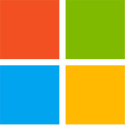Simply NUC Unveils Emerald 2 Powered by Intel 13th Gen Raptor Lake Processors
Simply NUC, Inc, a leading mini PC solutions company, announced they are taking orders for their brand-new Emerald 2 NUC. As the successor to Emerald, Emerald 2 features Intel's latest 13th Gen Raptor Lake processors and Iris Xe graphics to provide a powerful computing performance. From home office to remote deployments to digital signage, Emerald 2 is designed to be used across many different computing applications.
"We are delighted to launch Emerald 2 as the latest addition to our exceptional lineup of mini PCs," said Jonny Smith, CEO of Simply NUC. "Following the remarkable success of Emerald, we are confident that Emerald 2 will exceed customers' expectations by delivering outstanding computing performance, an immersive visual experience, and versatile connectivity options."
"We are delighted to launch Emerald 2 as the latest addition to our exceptional lineup of mini PCs," said Jonny Smith, CEO of Simply NUC. "Following the remarkable success of Emerald, we are confident that Emerald 2 will exceed customers' expectations by delivering outstanding computing performance, an immersive visual experience, and versatile connectivity options."

































































